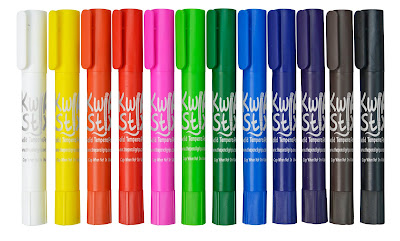Earlier this school year, I shared what we did to change our RtI process. One important change that we made has to do more with our philosophy that resulted in action. We really believe that one blanket intervention is not the answer. And I will admit that before I knew better, this is exactly what I did.
"Do the best you can until you know better. Then when you know better, do better." -Maya Angelou
I had access to one program and that is what I used to intervene with all my Tier 2 students. I truly believe that we need to analyze and determine what each student really NEEDS to move them forward.
So this is exactly what we did this year. We assessed, analyzed, and determined what intervention would best meet the needs of each and every student in our K-2 building. Some of them needed a handwriting intervention.
I have never provided handwriting interventions before. Over and over again it has been mentioned that students are moving grade to grade and their writing is not legible. So we decided to do something about it. And what we found is that it was a very quick intervention. For most students it took less than 5 minutes a day and lasted only a couple of weeks.
Once I analyzed some baseline data, I was able to determine the students that needed additional assistance on letter or number formation. Then I made a list of the exact letters or numbers that were in need.
Handwriting Without Tears has a sequence that they feel is best when teaching upper case and lower case letters. By using this sequence, I was able to make connections between letters that are formed in a similar way. I used their sequence, plus the assessment data to determine the letters that I would focus on each day. Here is an example:
Then I began working with each student. We would review previous letters learned. Then I would show them how to form two new letters. First they would trace the letter with sandpaper. Then we would draw the letter in the air with our arm and on the table with our index finger. These movements would transfer onto paper. I would model the letter formation with a highlighter on lined paper. The student would trace my letter and form their own letter next to mine.
The multi-sensory materials used were key. Here are some other options to provide a multi-sensory experience.
This is just salt in a small tin that I bought at Dollar General for 25 cents. Students use the eraser end of a pencil to form the letter.
This is an old place mat that I cut up. I drew lines on it so that we could use our finger to write the letters. I have also placed paper on top to provide a bumpy surface when they write.
I like to use a variety of writing tools for motivation, engagement, and to provide different sensory experiences. Kwik Stix just came out with these Thin Stix. It feels very smooth when you write with them. For my students, these really "force" them to write with continuous motion. If you do not, a gap will form in the letters (see image below). For this reason, I have found these to be really helpful when I work on handwriting.
I found great success with the intervention because it was multi-sensory, one on one, explicit, and direct. I was worried that the new learning would not transfer over into class work and writer's workshop. For the students that I worked with, I did analyze their writing pieces with them. We looked over their letter formation together. Then practiced any letters that they still were not comfortable writing. This little added analysis really made a difference with the transfer of knowledge.
Any handwriting tips? I'll take them!
Em






Our handwriting lessons are embedded in journal writing while I model my sentences and when we practice our Word Wall words. Now I'm interested in how I could make this more intentional. Great information and activities!
ReplyDeleteOur handwriting lessons are embedded in journal writing while I model my sentences and when we practice our Word Wall words. Now I'm interested in how I could make this more intentional. Great information and activities!
ReplyDeleteOH MY!!! This is amazing. I will not give up, my students can learn to form letters correctly. I wonder if I could teach an aide to do this...
ReplyDeleteThanks for continuing to share with us!
Alyce
I love how intentional you are!
ReplyDeleteThank you so much!!
DeleteThanks so much for your message, Taryn!! I get so excited to hear from other teachers that are so close by!! I am always looking for more ways to grow and connect through and with other teachers. The place mat...it is fun to shop for these types of multi-sensory materials!! Thanks again.
ReplyDelete